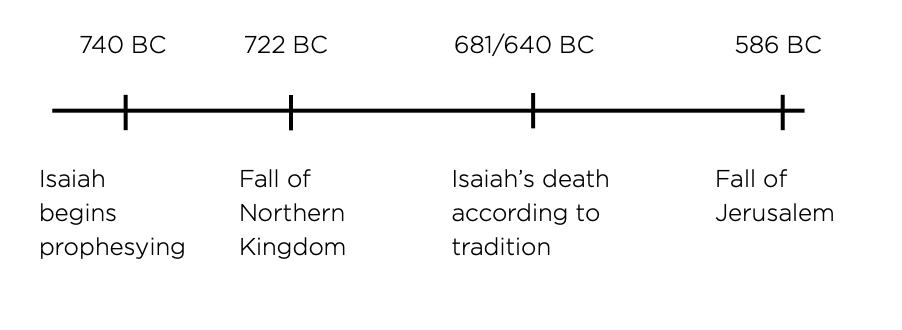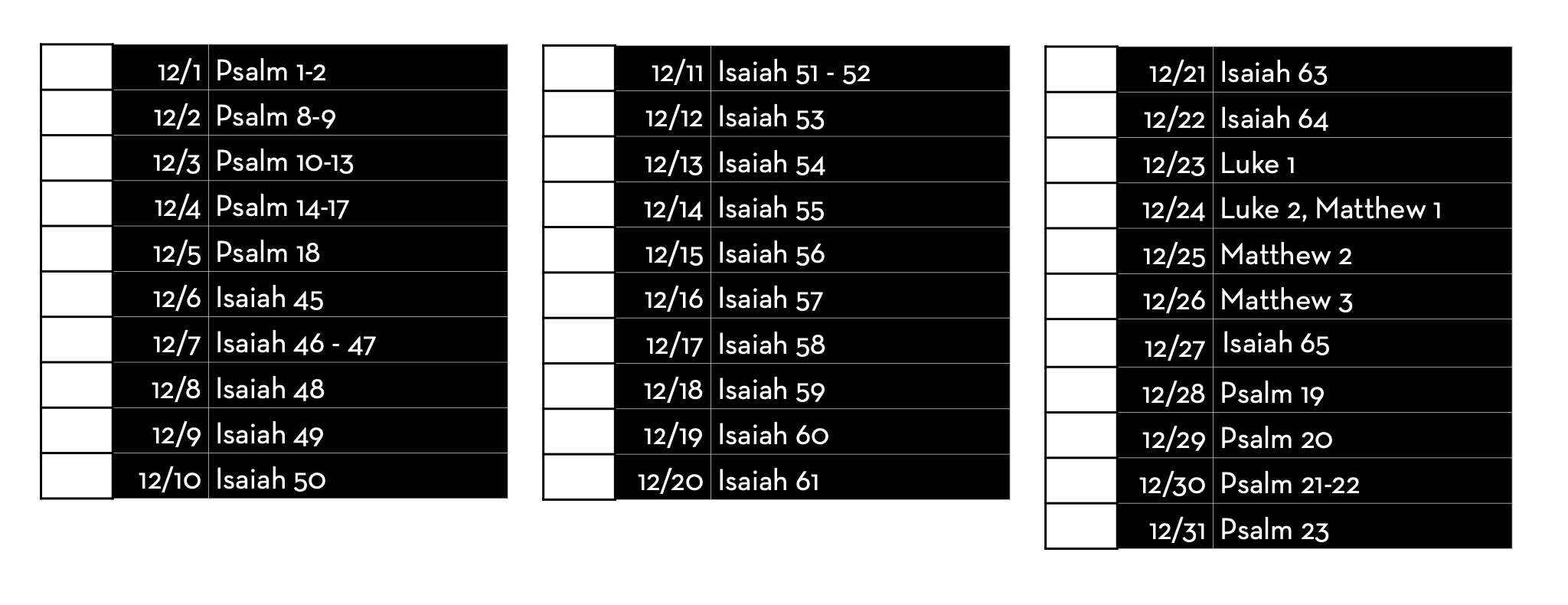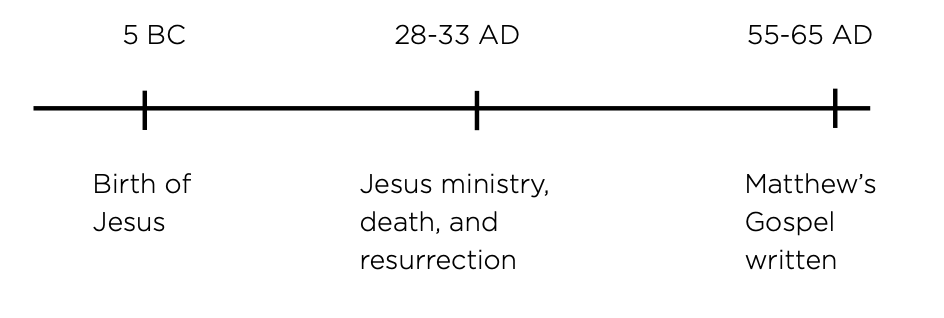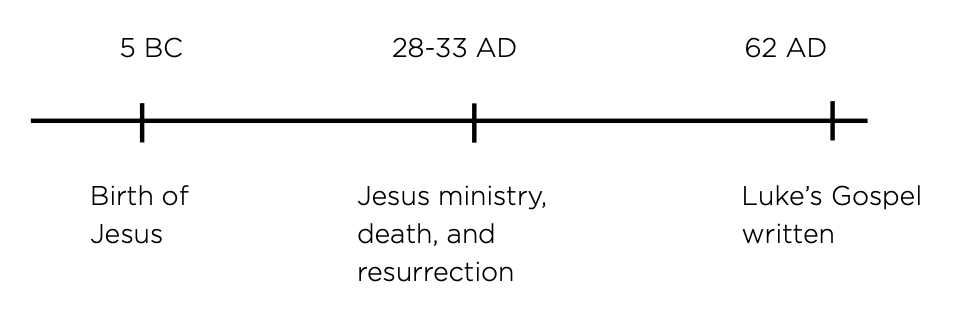December Bible Reading Plan
PSALMS
Timeline (Approximate)

The Psalms span a time frame of about 1000 years. Most of the Psalms were written between 1010 and 930 BC during the time of David and his son Solomon. The oldest psalm, Psalm 90, was thought to be written by Moses in approximately 15th Century BC, but the book spans to the days when the Hebrews were being held captive by the Babylonians, from about 586 to 538 B.C.
They must have been compiled and put together in their present form by some unknown editor shortly after the captivity ended around 538 BC.
Authorship and Purpose:
Psalms is a book of poetry. Psalms, Psalter (Greek), Tehillim (Hebrew word for “praises”) whichever title we use, the meaning is essentially the same - “instrumental music" and, by extension, "the words accompanying the music”. The book is a collection of individual Hebrew religious hymns. These prayers and praises were written for the people of Israel to provide a way to meet with God and hear God’s entire biblical story sung back in poetry.
There are 150 poems in the Book of Psalms with various authors: David wrote 73; Asaph wrote 12; the sons of Korah wrote 9; Solomon wrote 2; Heman (with the sons of Korah), Ethan and Moses each wrote 1; and 51 Psalms were anonymous.
Reading Psalms:
So many things can be learned from the longest book in the Bible. The Psalms provide teaching, songs, and prayers to lift our praise to God. But perhaps most importantly, the Psalms help believers understand how their deepest and strongest emotions fit in a relationship with God.
The Psalms continue to be relevant today. In a culture that can downplay the importance of showing emotion - where anger, fear and grief should be hidden behind a “brave face,” - the Psalms give us a tangible format to pray and share our troubles with God. Additionally, we can use them to shower him with praise and thank Him for our deepest joys and longings with no restraint.
There are five books that make up Psalms.
Book 1: Psalms 1—41
Book 2: Psalms 42—72
Book 3: Psalms 73—89
Book 4: Psalms 90—106
Book 5: Psalms 107—150
It is debated why Psalms is divided into five books. Some sources, including Jewish traditions, suggest it is based on the five books of the Torah (Genesis to Deuteronomy). The division of the Psalms is not based on authorship or chronology, as the various authors and their individual songs are mixed throughout the collections.
Each of these five books or sections of Psalms ends with a doxology or a song of praise. The final verse of each concluding psalm includes either “Praise the Lord!” or “Amen.”
Hold onto hope. The future is filled with hope, and God is fulfilling Isaiah’s prophecies. A Messiah is on the way.
The people have lost faith. God is responding to people’s faithlessness and gives them insight to why they are in suffering.
Key Themes:
Composed over several centuries by various authors, the Psalms are varied in them and context. However, in spite of subtle variations, they can be summed up as man reaching to God for help and God’s hand extended to rescue man from his troubles.
The poems of Book 1, which we’ll be reading this month, are primarily the genre of lament, which show the anguish in waiting for the Messiah and is still relatable today. There are also songs of praise, trust, thanksgiving, wisdom and royal (directly related to the spiritual role of God.)
Structure:
1 A new Torah About Prayer
2 A Messianic King
15 A Call to Covenant Faithfulness
16-18 David’s Past Deliverance and Elevation as King
19 Torah
20-23 Future King’s Deliverance and Kingdom Over the Nations
ISAIAH
Timeline (Approximate)

Authorship and Purpose:
Most conservative Bible scholars are in agreement that Isaiah was the sole author of the book that bears his name. However, there are two schools of thought about who wrote the book of Isaiah.
The first says that Isaiah wrote the first 39 chapters himself and sealed the second part of the book (40-66) and those scrolls were opened by his disciples in the future sometime after the Babylonian captivity started and the death of Isaiah.
This theory of “Deutero-Isaiah” (or second Isaiah) came about near the end of the eighteenth century. This theory says that it is the voice of Isaiah AND his prophetic disciples that make up the second part (chapters 40–66) of the book.
This later date would explain away specific mentions in the chapters without requiring prophecy.
Most reputable Bible scholars reject the “Deutero-Isaiah” theory. Their conclusions include the similarity of writing styles in both sections, the consistent use of the same words throughout, and the familiarity of the author with Israel, but not Babylon. Furthermore, Jewish tradition and the teachings of Jesus attribute the entire book to Isaiah.
Messianic prophecy is strong and important evidence for Jesus’ claims to be God. Isaiah’s writings were completed many centuries before Jesus Christ was born and yet are completely accurate.
Reading Isaiah:
The “office” of Prophet was instituted during the days of Samuel, the last of the Judges. Prophets stood with priests as God’s special representatives. Their role was to speak for God, sometimes confronting the people and ultimately relaying God’s promises and commands. Because a lot of people didn’t like what the prophet had to say, prophets weren’t often liked! The Book of Isaiah is the first of the Prophets in the Bible, and Isaiah is often considered to be the greatest prophet. When he started his ministry, he was quite popular, but as time went on, his messages got harder to hear; he soon became unpopular. He called the people to repent of their sins and warned of God’s judgment and punishment.
He prophesied under the reign of four Judean kings—Uzziah, Jotham, Ahaz, and Hezekiah (1:1)—and he likely met his death under a fifth, the evil King Manasseh. Isaiah’s prophecy proclaimed God’s word and contained messages that are still very applicable today: return, repent and be renewed. Then trust in God’s redemption through Christ and rejoice.
God is guiding all of human history.
The wrath of God is to be feared above all else.
Hold onto hope. The future is filled with hope, and God is fulfilling Isaiah’s prophecies. A Messiah is on the way.
The people have lost faith. God is responding to people’s faithlessness and gives them insight to why they are in suffering.
Key Themes:
Isaiah contains one of the clearest expressions of the gospel in all the Old Testament. Even from the first chapter, it is clear that the people have turned away from
God and failed in their responsibilities as His children (Isaiah 1:2–17). Yet God holds out hope to this unrepentant people, offering cleansing of sins and the blessing that comes with faith and obedience in Him (1:18–20). Salvation lies only in God—the only question is whether or not we will accept His offer.
The book of Isaiah also gives us the most comprehensive prophetic view of Jesus Christ in the entire Old Testament. It includes the full scope of His life: the announcement of His coming (Isaiah 40:3–5), His virgin birth (7:14), His proclamation of the good news (61:1), His sacrificial death (52:13–53:12), and His return to claim His own (60:2–3). Because of these and numerous other christological (the study of Christ) texts in Isaiah, the book stands as a testament of hope in the Lord, the One who saves His people from themselves.
Structure:
45-48 Announcement of Hope
49-55 The Servant Fulfills God’s Mission
56-66 The Servants Inherit God’s Kingdom
MATTHEW
Timeline (Approximate)
Authorship and Purpose:
Earliest traditions credit Matthew (Levi) the tax collector, one of the original 12 disciples of Jesus, as the author of this book.
Matthew was once a despised tax collector, but his life was changed by this man from Galilee. This book was written especially to the Jews to prove that Jesus is the Messiah.
Reading Matthew:
The way the book is written, is almost exactly what you’d expect to see from a tax collector. Matthew was very orderly and detailed. The Gospel of Matthew is exactly that - precise accountings of the teachings of Jesus.
Something really interesting to point out is that as a tax collector, Matthew had a skill that makes his accounts even more exciting. He would have been expected to know shorthand, which basically meant Matthew could record a person’s words as they spoke, word for word. This ability means that Matthew mostly likely kept an actual transcript of some of Jesus’s sermons! For example, the Sermon on the Mount (chapters 5-7) is likely an exact recording of the message.
This Gospel forms the connecting link between the Old and New Testaments because of its emphasis on the fulfillment of the messianic prophecy.
As you read, look for places that Jesus quotes the Old Testament and go back and read the context of what he’s teaching. You might be surprised. Also pay attention to the people that accepted Jesus along the way.
Key Themes:
Jesus is King - Jesus is revealed as the King of kings. His miraculous birth, his life and teaching, his miracles, and his triumph over death show his true identity.
Jesus is the Messiah - the one the Jewish people had waited to deliver them from oppression. Yet, they didn’t recognize him when he came because he wasn’t what they expected. The true purpose of Jesus was to die for all people to free them from their sins.
Kingdom of God - Jesus came to earth to begin his kingdom. His full kingdom is yet to be realized at his return and anyone who wants to faithfully follow him will be included.
Teachings - Jesus was a teacher. He used sermons, illustrations and stories to show what true faith looked like and how to life a fruitful and faith-filled life.
Structure:
1 Messiah from the Line of David
2 New Moses
3 God with Us
LUKE
Timeline (Approximate)
Authorship and Purpose:
Luke - a doctor (Colossians 4:14), a Greek, and a Gentile Christian. He’s the only known Gentile author in the New Testament. Luke was a close friend to Paul and also wrote Acts.
The book (and the book of Acts) is written to “Theophilus (translated “friend of God”) whom about nothing more is known.
Luke’s audience included Gentiles and people everywhere to present an accurate account on the life of Christ and to present Christ as the perfect human and Savior.
Some of his goals in writing probably included assuring them of the truth of the Messiah and helping them understand that Israel’s rejection of Jesus and inclusion of Gentiles into the kingdom of heaven are all part of God’s plan.
Reading Luke:
While all the Gospels tell of the birth of Jesus, Luke gives this account as though he were the attending physician and provides most of the details around the occasion. Luke was a man of science and beings by outlining his extensive research and explaining that he is reporting the facts (1:1-4). Luke was also a close friend and traveling partner to Paul, so he could interview the other disciples and was an eyewitness to the birth of the early church.
Key Themes:
Jesus is the promised Messiah, the gospel for all. He is for Jews and Gentiles alike.
Structure:
1:1-1:4 Introduction
1:5-2:52 The Infancy and Growth of Jesus


